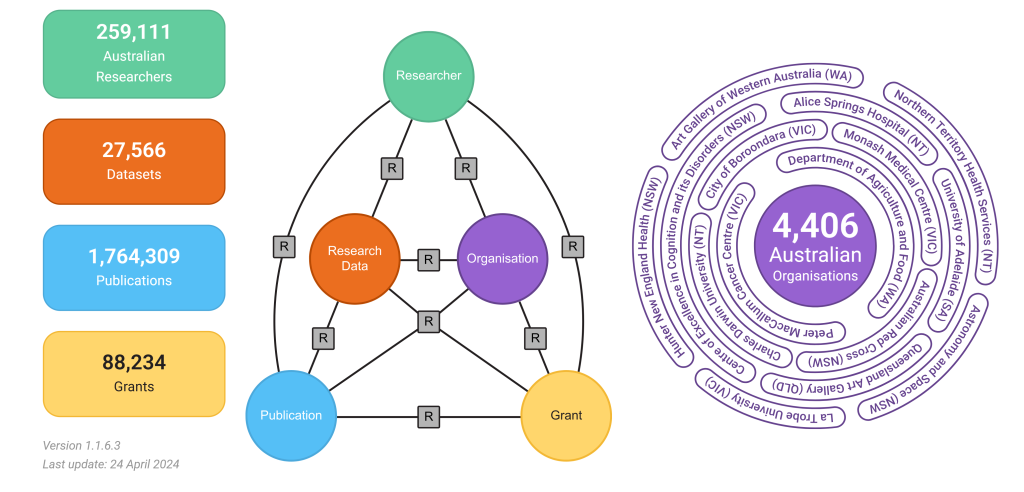Future of Research

Persistent Identification and Machine-Actionable Knowledge Author This article explores and analyses the paper ‘Persistent Identification and Interlinking of FAIR Scholarly Knowledge’ by Muhammad Haris, Markus Stocker and Sören Auer from ML3S Research Center, Leibniz University Hannover. The paper was published in 2022. Introduction The Problem with Traditional Research Papers Every year, millions of research papers are […]
ROR: Mapping Research Organisation IDs

Understanding How the Research Organisation Registry is Used Across the Web Created using DALL.E on 2 March 2025 Author Introduction In today’s digital research landscape, finding, accessing, and connecting scholarly information has become increasingly complex. How do we reliably identify research outputs, the people who create them, and the organisations where this work takes place? […]
Understanding the PID Graph: Building Connected Research Infrastructure for the Digital Age

How Persistent Identifiers Are Creating a Navigable Map of Knowledge This blog post is based on and summarises the paper “Connected Research: The Potential of the PID Graph” by Helena Cousijn, Ricarda Braukmann, Martin Fenner, Christine Ferguson, René van Horik, Rachael Lammey, Alice Meadows, and Simon Lambert, published in 2021. The original paper introduced the […]
Research Graph 102

Using Cypher to work with the Australian National Graph The Australian National Graph is the first large-scale initiative to develop a national PID graph database. Using the Research Graph schema, it connects more than a thousand research organisations to their associated research outputs. Introduction In this article, we look at the graph database developed as […]
Research Graph 101

Research Graph is a heterogeneous network that connects research outputs, research activities and researchers. Author Introduction In this article, we look at Research Graph as an information model, and an approach to connect and capture the connections between research outputs, researchers and research activities. We explore the metadata model, and we discuss how to capture […]